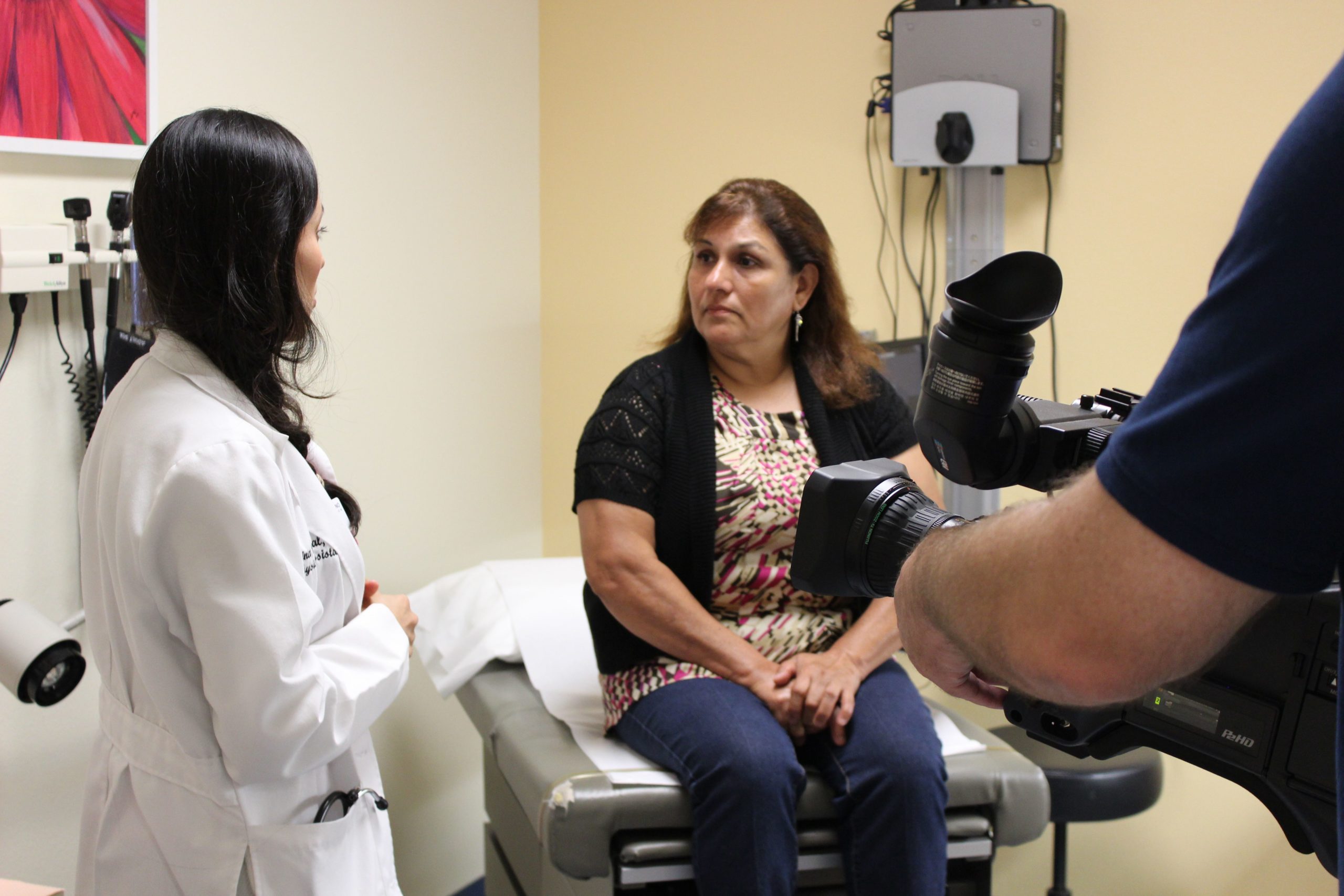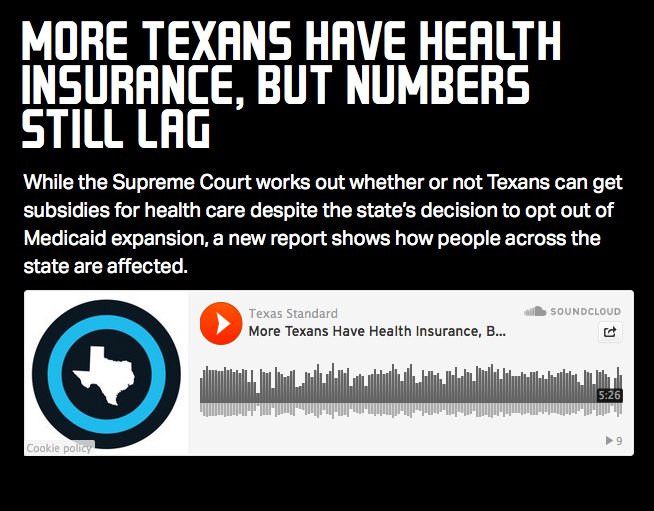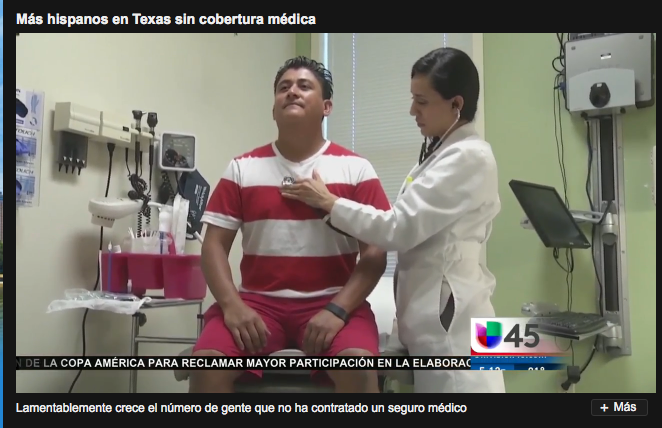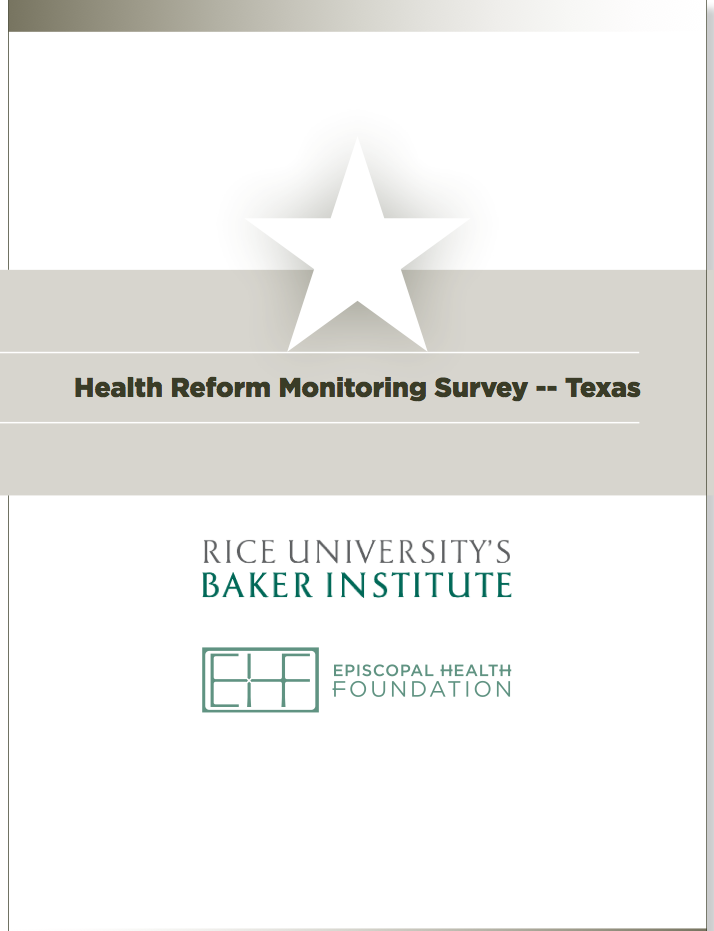
Hispanics and women in Texas showed the largest percentage of reductions in rates of uninsured since enrollment began in the Affordable Care Act’s (ACA) Health Insurance Marketplace, according to a new report released by the Episcopal Health Foundation and Rice University’s Baker Institute for Public Policy.
The report found from September 2013 to March 2015, the percentage of Hispanics without health insurance fell 38 percent (from 39.1 percent uninsured to 24.3 percent), more than any other ethnic group. The percentage of uninsured women fell 32 percent (from 26.4 percent uninsured to 18 percent).
“Hispanics in Texas had the lowest rates of coverage before the ACA, which meant they had the most to gain from the act’s Health Insurance Marketplace,” said Elena Marks, president and CEO of the Episcopal Health Foundation and a nonresident health policy fellow at the Baker Institute. “In Texas, because so many of our residents are Hispanic, it’s important that this group become insured to increase the overall rate of coverage across the state.”
Women were more likely to be uninsured than men before the ACA, and the new report found that is still true, but the gap is closing. The survey found 16 percent of Texas men are now uninsured compared with 18 percent of women — the gap was 6 percentage points in 2013.
As the authors reported earlier this year, the overall rate of uninsured Texans decreased from 24.6 percent to 16.9 percent from September 2013 to March 2015. The decreases in uninsured rates were not shared equally among all Texans, however. Texans with low incomes and low educational attainment experienced smaller reductions in the rates of uninsured than those who have higher incomes and are more educated.
The report found the uninsured rate of Texans earning from $16,000 to $45,000 fell 44 percent (from 21.1 percent uninsured to 11.7 percent) since 2013. However, for those earning below $16,000, the uninsured rate fell just 18 percent (from 49.7 percent uninsured to 39.9 percent), less than half as much.
The same was true for Texans with the lowest education levels. While high school graduates saw a 37 percent drop in the percentage of uninsured (from 27.2 percent uninsured to 17.2 percent), the rate for those who didn’t graduate fell just 12 percent (from 40.5 percent uninsured to 35.7 percent).
“The likely explanation for this disparity is the fact that those with lower educational attainment are likely to earn less, and those with the lowest incomes were not eligible for subsidized insurance plans in the marketplace,” said Vivian Ho, the chair in health economics at Rice’s Baker Institute and director of the institute’s Center for Health and Biosciences, a professor of economics at Rice and a professor of medicine at Baylor College of Medicine. “For this population, unless and until there is some form of coverage expansion, likely within the Medicaid program, they are likely to remain uninsured.”
Listen to Elena Marks talk about EHF’s research on Texas Standard, a statewide NPR program.

Watch Univision 45’s (Houston) news report on EHF’s research (en Español)
The report also looked at the changes in rates of health insurance coverage for the same demographic groups in the U.S. as a whole. In some cases, such as the relative changes in rates of uninsured for people with income and low education levels, the patterns in Texas and the U.S. are the same.
Blacks experienced the greatest reduction in uninsured rates at the national level (by more than 5 percentage points). In Texas, blacks experienced the smallest decrease of any demographic group examined — only 4.5 percent (0.7 percentage points) — while Hispanics and whites experienced reductions fivefold greater.
The report is the 12th in a series on the implementation of the ACA in Texas co-authored by Marks and Ho.
The Health Reform Monitoring Survey (HRMS) is a quarterly survey of adults ages 18-64 that began in 2013. This issue brief is a summary of data extracted from the HRMS surveys in Texas administered between September 2013 and March 2015 with responses from 1,544 Texans.
It is designed to provide timely information on implementation issues under the ACA and to document changes in health insurance coverage and related health outcomes. Rice University’s Baker Institute and the Episcopal Health Foundation are partnering to fund and report on key factors about Texans obtained from an expanded, representative sample of Texas residents (HRMS-Texas).
The HRMS was developed by the Urban Institute, conducted by GfK, and jointly funded by the Robert Wood Johnson Foundation, the Ford Foundation and the Urban Institute. The analyses and conclusions based on HRMS-Texas are those of the authors and do not represent the view of the Urban Institute, the Robert Wood Johnson Foundation or the Ford Foundation.
Read and/or download the entire research report
